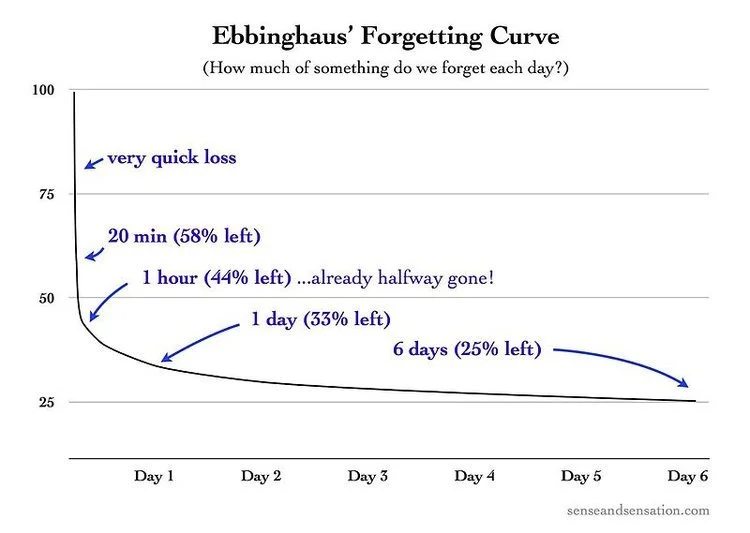Check-The-Box Skills Training Doesn’t Work… And Here's Why
Imagine that you are responsible for training the attorneys in your law firm. The lawyers in your firm have told you that they want training on critical management skills such as delegation and team management. You've heard them. Using your limited budget, you source an outside provider to design and deliver a training program. You work with the outside provider to make sure the program fits with your firm's culture and style. You send an Outlook invitation and wait to see what kind of interest you get. You are buoyed by the response. Over thirty of your colleagues have accepted! However, you know from experience that there’s a big difference between the number of acceptances you receive and the number of lawyers who will show up on the day. Undeterred, you stay positive and keep up the invitation pressure with personal conversations and well-timed reminders. Soon enough, the day arrives. Your worst fears are confirmed. Only a handful of people show up. In the hope that others will show, you ask the presenter to wait a few extra minutes before starting. No one else shows so, reluctantly, you give the go-ahead to start. A few minutes after the program has started, a couple of latecomers trickle in.
Does any of this sound familiar?
If so, what can you do to maximize attendance and, more importantly, the program’s impact on your attorneys?
Next time, think about skipping the training and instead opt for group coaching. Even if all thirty or more lawyers had turned up for the program, we might well say the same thing. Why? Because of the Forgetting Curve.
The Forgetting Curve tells us that a typical learner retains surprisingly little of what he or she learns. The curve was first developed by 19th century German psychologist, Hermann Ebbinghaus as he sought to measure his own memory retention. In short, Ebbinghaus introduced the idea that learners forget newly learned information exponentially over time, resulting in little memory retention only days after acquiring the new knowledge. Modern researchers have come to similar conclusions although the argument is that when a learner is able to connect new learning with what he or she already knows, the speed with which newly learned information is forgotten is likely to be less dramatic than shown in the Ebbinghaus data. In any event, the Forgetting Curve concept reflects what many people intuitively know to be true. Unless new information is consciously used, repeated or reviewed, learners will most likely fail to retain most of what they learned. And yet, when it comes to developing new skills, practice and reflection are essential. The impact of the Forgetting Curve is exacerbated by the regular challenges of work. However good a learner’s intention when leaving the classroom, it’s likely that if faced with applying newly learned skills, he or she will, under pressure or stress, default to their usual pre-learning behaviors.
Coaching, even in groups, can help to defeat this retention problem by providing a more customized learning experience and enabling individuals to develop and practice their skills over time, making it more "sticky" and more effective long-term.
The fundamental difference between training and coaching is simple: Training is instructive. It aims to transfer knowledge or skills as efficiently as possible. Coaching, on the other hand, involves the enhancement and development of that knowledge or skillset through dialogue, application, and reflection.
Lawyers may leave a typical training program equipped with a new skill - at least in the abstract sense - but not necessarily with any guidance on how to develop or refine it over time. And, most likely, time constraints mean that a training program design doesn’t allow for learners to practice their new skills. Coaching, on the other hand, enables participants to explore and hone their new skillset through a guided and individualized process.
What is Volta Group Coaching?
Group coaching is a flexible and customizable approach that involves a coach working with a small group (ideally 6-8 people but no more than 15) over several sessions (e.g., weekly or monthly) to facilitate discussion with and among group members to develop their skills (e.g., delegation) in the context of an overall firm goal (e.g., enhanced leadership and people management). Group coaching can also incorporate structured content to create a foundation for the group’s discussion and related coaching. Group members learn not only from the coach but also from each other. In between sessions, members of the group are expected to work towards their specific, individual goals - this may include “homework” and practice.
While large group training design tends to assume that all participants learn and absorb information similarly, coaching can more easily accommodate different preferences in terms of learning style. Coaching is adaptive, flexible and responsive, enabling the coach to meet the learner where he or she is by asking questions and encouraging information sharing. And, given its more individualized approach, coaching can more quickly (and purposefully) get to what’s truly important for the individual.
Unlike large group classroom sessions, coaching is an immersive experience which puts the learner at the center of the learning. It is also likely to promote active individual engagement in a way that classroom training typically doesn’t. And, unlike classroom training, it builds over time to drive sustainable change and development. Coaching delivers a framework within which learners can continue to focus on what is relevant to them individually and apply what they have learned.
Now, at last, you can forget about the Forgetting Curve!

